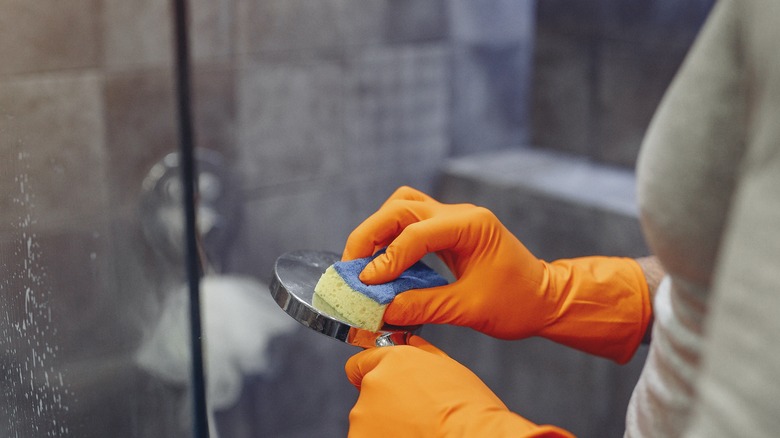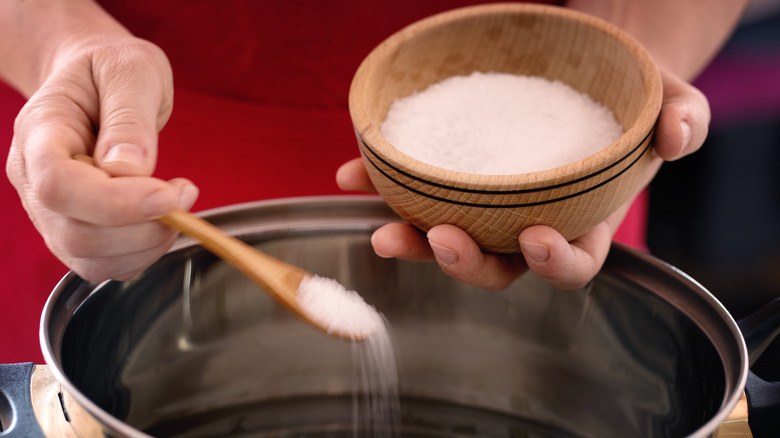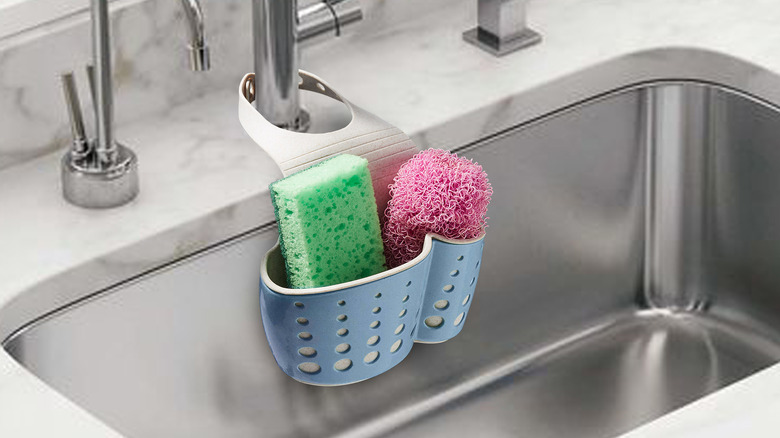How To Use Salt To Bring Life Back To A Sponge
Sponges are a valuable tool in our daily cleaning routine, helping us with important tasks such as wiping counters and scrubbing dishes. However, they can become dirty, smelly, and less efficient over time. Fortunately, there is a natural and easy solution to revive sponges. Salt, the same household staple you use in cooking, can also rejuvenate sponges by eliminating bacteria and stains, thus prolonging their usefulness.
If you want to refresh your worn-out sponges, you can learn how to use salt effectively by understanding the science behind its cleaning properties. Soaking sponges in a saltwater solution is an effective and environmentally friendly option for disinfecting and deodorizing sponges without harsh chemicals. This eco-friendly method extends the lifespan of your sponge and reduces waste, making it a cost-effective and chemical-free choice for maintaining a clean and hygienic kitchen. Here's how you can use salt to extend the usefulness and safety of household sponges.
Saltwater for sponges
Sponges can develop unpleasant odors from bacteria and food particles trapped in them over time. However, salt's hygroscopic nature enables it to draw moisture from the sponge, creating an environment where bacteria struggle to survive. This reduces unpleasant smells and prevents the growth of mold and mildew. Salt also absorbs oils and helps to loosen stains, making the sponge more efficient at cleaning. To start, dissolve ¼ cup of salt (such as table salt, sea salt, or kosher salt) in warm water. Ensure that the salt is fully dissolved to avoid abrasive particles that might damage the sponge's fibers.
Next, submerge the sponge completely in the saltwater solution, allowing it to soak for several hours. For the best results, leaving it to soak overnight is recommended. During this time, the salt will work its magic by deodorizing the sponge and breaking down the trapped particles and stains. Rinse the sponge thoroughly with clean water to remove any remaining salt residue. You'll notice that your sponge is now refreshed, cleaner-smelling, and ready to take on its cleaning tasks with renewed efficiency.
Maintaining a clean and hygienic sponge
By establishing a regular cleaning routine, you can keep your sponge in top condition. Rinse it thoroughly after each use, squeezing out any excess water and food particles that may encourage bacterial growth. Remember to let it air dry in a well-ventilated area to prevent the growth of mold and mildew in a damp environment.
Properly storing your sponge is crucial in maintaining its cleanliness and preventing the spread of germs. Keep your sponge upright for improved airflow and away from surfaces that may harbor bacteria, so that you can ensure it dries completely and stays safe for use. Knowing when to throw out your sponge is also necessary for maintaining a clean sink and kitchen. As sponges age, they become less effective and less hygienic. Watch for signs of wear, such as frayed edges, persistent foul odors, or declining cleaning performance, and replace your sponge regularly to ensure optimal results and to reduce the risk of spreading harmful bacteria.


